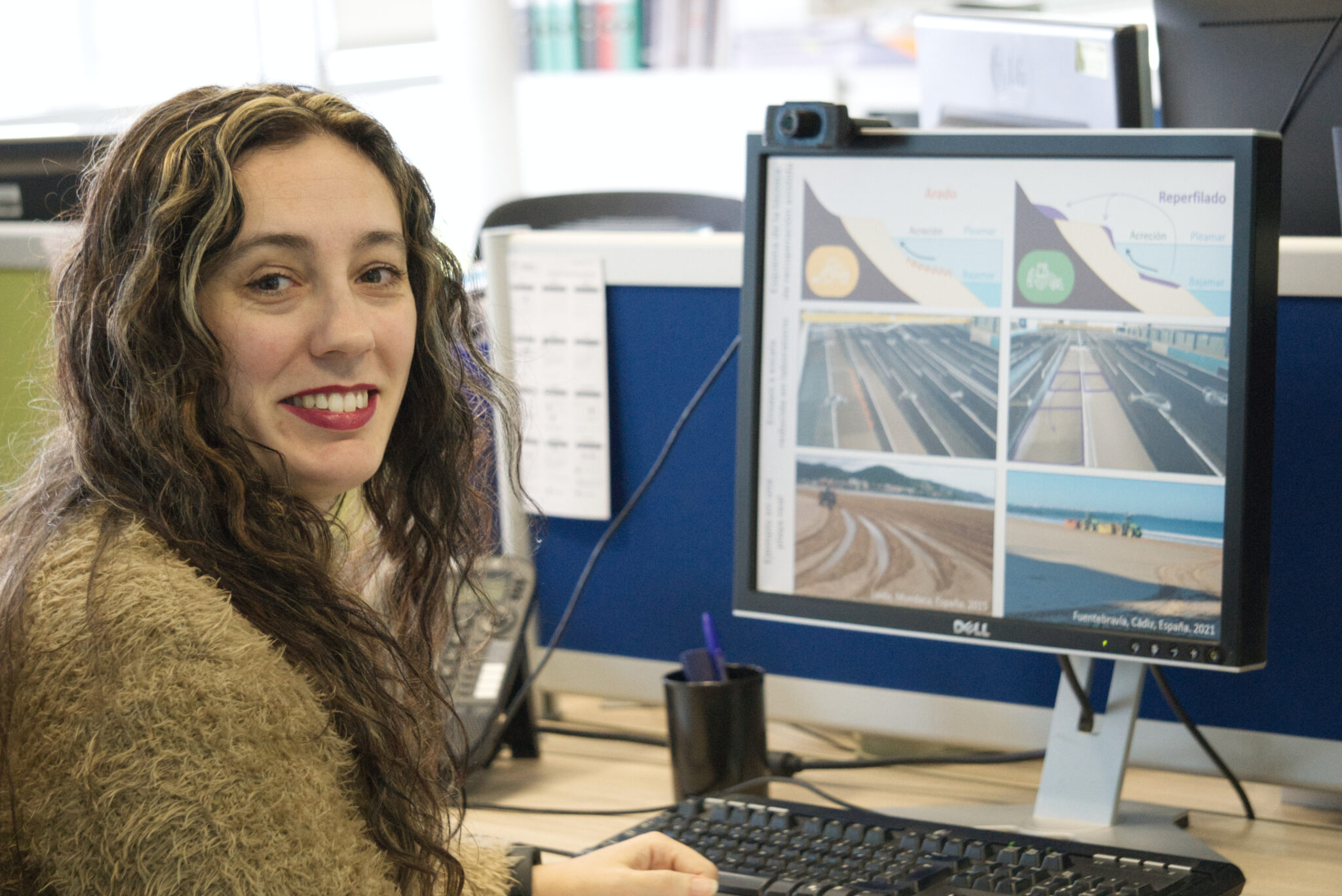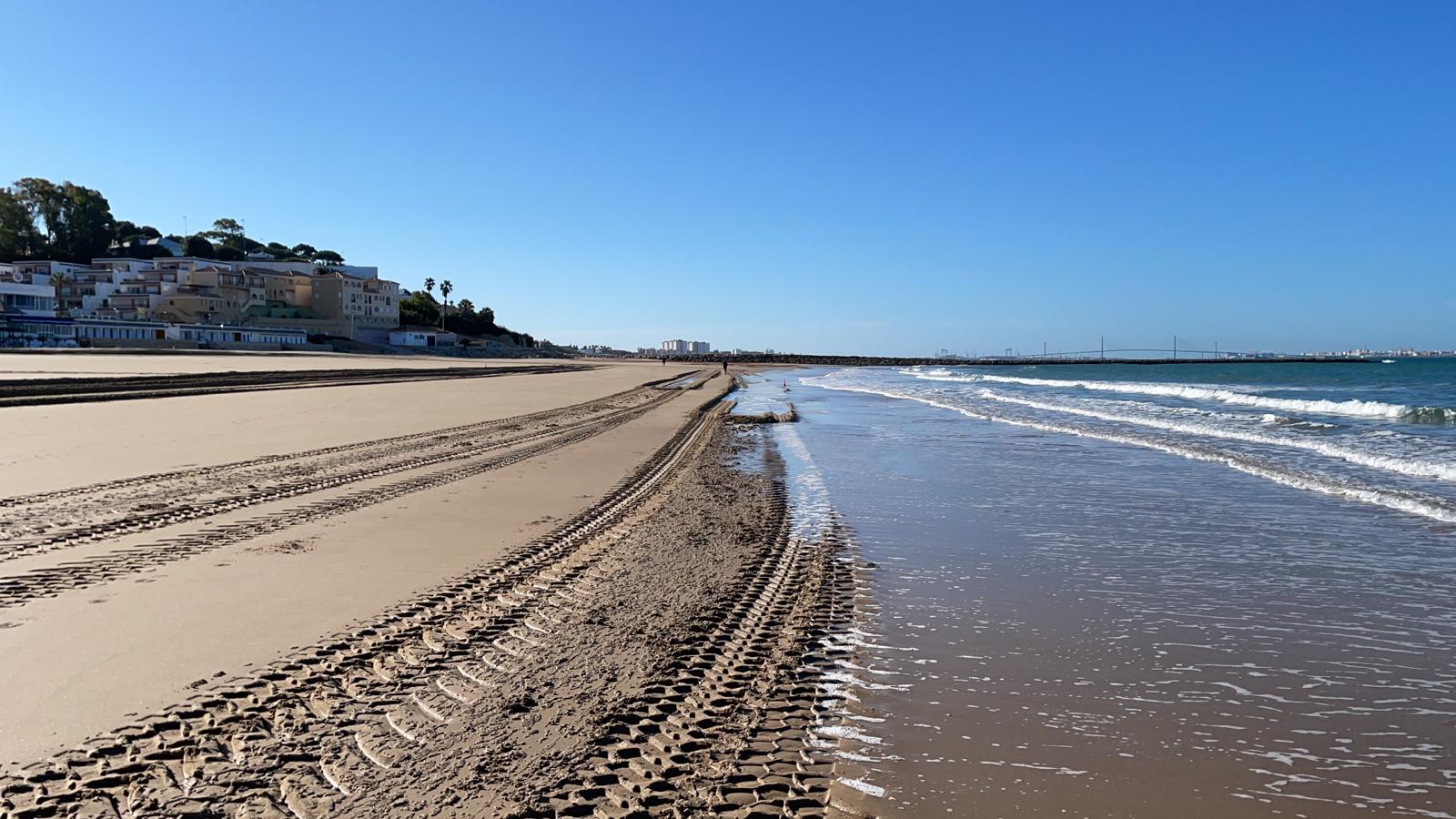IHCantabria confirms the effectiveness of assisted reclamation techniques to accelerate beach restoration at a reduced cost and with minimal environmental impact
It is a significant advance in coastal engineering, as it offers viable solutions for combat erosion and contribute to the recovery of beaches, working with nature. Its efficacy was tested under controlled laboratory conditions
The results of a groundbreaking study, recently published in the scientific journal Coastal Engineering, present relevant findings on the effectiveness of nature-assisted reclamation techniques, such as beach plowing and re-profiling, based on a laboratory evaluation. The scientific article was published in English under the title “Laboratory evaluation of the effectiveness of nature-assisted beach enhancement techniques”.
Beaches around the world face constant erosion challenges due to storms and sea level rise, which affects more than 30% of sandy shores globally. For those living in coastal areas, it is essential to have a wide beach, as this offers greater protection against the possibility of erosion and flooding, as well as a great opportunity for tourism. However, with winter storms, the volume of sand on the beaches tends to decrease, because they erode, to the point that some may even disappear, although they may recover with time. The affected beach could regenerate naturally, but at a slow pace, which would make it impossible to guarantee its full recovery before the summer.
“To accelerate this process, it is necessary to resort to the application of nature-assisted recovery techniques, such as the plow and beach reprofiling,” reports Erica Pellon de Pablo, the main author of the aforementioned article and of the doctoral thesis on which part of the research reported in the journal Coastal Engineering is based. The other co-authors of this article are Cesar Vidal Pascual, Paula Gomes Da Silva, Iñigo Aniel-Quiroga Zorrilla, Mauricio Gonzalez and Raul Medina Santamaria. All these researchers work at the Institute of Environmental Hydraulics of the Universidad de Cantabria (IHCantabria).
The article addresses the need to make decisions that will allow us to improve resilience and be more prepared to face coastal erosion threats, in addition to ensuring that beaches are wider during the high tourist season. The results of this research confirm the effectiveness of beach plowing and re-profiling, which allows us to foresee the great impact and viability of these nature-assisted techniques. These techniques consist of carrying out small sand movements in the intertidal zone, by means of land-based machinery and during low tide. In the plowing technique, furrows and ridges are made, while in reprofiling a shallow trench is created in the intertidal zone and the extracted sand is dumped on the dry beach or dune. When the tide rises and the water covers the modified areas, the action of the waves produces a faster recovery of the beach.
The efficiency of these techniques was tested for the first time under controlled laboratory conditions in IHCantabria‘s Directional Ocean Tank (TOD, by its acronym in Spanish). Through meticulous laboratory experiments on beach plowing and re-profiling, this research provides an unprecedented comparison of beach reclamation for five different geometries of nature-assisted reclamation techniques. For this purpose, sand, tide and waves were simulated at a reduced scale in the TOD, comparing the results of each of these techniques with the natural recovery of a beach without actions. The findings of this research confirm how effective the combination of these techniques with natural processes can be in enhancing beach accretion while minimizing human interventions. This research was funded by the Spanish Ministry of Economy, Industry and Competitiveness, in addition to having received the support of the Government of Cantabria, which highlights the collaborative efforts in the advancement of coastal engineering research.
“Key revelations from the study suggest that, for dry beach widening, techniques such as plowing and reprofiling by taking sand from the lower intertidal area and placing it by widening the dry beach seaward show remarkable effectiveness, allowing for accelerated reclamation at greatly reduced cost and with minimal environmental impact. Recommendations are also offered to improve the resilience of beaches to cope with winter storms. In this case, the most appropriate technique is reprofiling, taking sand from the upper intertidal area and using it to regenerate the dunes,” he explains. Erica Pellon de Pablo, whose doctoral thesis was defended at IHCantabria, last October 27, under the title: “Nature-based solutions to accelerate beach recovery”.
Pellon also highlights the need to consider some specific characteristics of the site where beach plowing and re-profiling techniques are planned to be applied, in addition to providing continuous monitoring, in order to optimize the effectiveness of nature-assisted reclamation techniques.
In short, the study referred to in the article published in the scientific journal Coastal Engineering highlights the potential of nature-assisted reclamation techniques to address coastal erosion, while meeting some of the demands of the tourism sector. Therefore, understanding their effectiveness and ecological impact is critical to promoting sustainable coastal management.
The full content of the article published in Coastal Engineering can be accessed through the following link: Laboratory evaluation of the effectiveness of nature-assisted beach enhancement techniques – ScienceDirect

Erica Pellon de Pablo, researcher of the Coastal Engineering and Management Group of IHCantabria

Application of beach plowing, which is a nature-assisted reclamation technique

IHCantabria studies confirm the effectiveness of beach plowing and re-profiling as nature-assisted reclamation techniques


